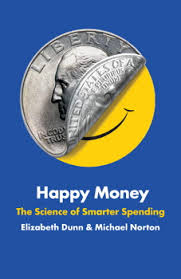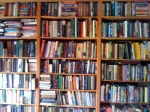 Every day, I do the New York Times crossword puzzle. It truly is a ritual for me, almost as sacred as Shabbat: every night before going to bed, I load up the crossword on my phone or my computer, and try to plow through that mental challenge.
Every day, I do the New York Times crossword puzzle. It truly is a ritual for me, almost as sacred as Shabbat: every night before going to bed, I load up the crossword on my phone or my computer, and try to plow through that mental challenge.
I’ve discovered that there’s a deep satisfaction that goes far beyond filling in that last box to complete the puzzle, and what I’ve learned is more than just the fact that Charles Lamb was also known as “Elia” and a whole long list of four-letter European rivers. What I really love about crosswords is the struggle, trying to figure out how I’m going to go about solving it.
And what the process of solving crosswords has truly taught me is how easily success can become failure, and how easily failure can become success.
Quite often, I come across a clue whose answer I feel certain that I’ve filled in correctly. And then I discover that one of the crosses doesn’t work. But I was so sure I was right! But it’s not working.
That’s usually when I get frustrated, because what I “knew” to be right actually turned out to be totally wrong. At that moment, my apparent success is preventing me from making further progress on the puzzle. And so the only way to break through that struggle is to say, “Maybe my assumption was wrong.”
That’s not easy to do in life — to be able to say, “Perhaps I was mistaken.” But what I’ve discovered is that when I have to re-think my approach, I gain new knowledge that I wasn’t expecting. I become a better solver for future puzzles. I begin to think in new and innovative ways.
To put it another way, I’m learning.
There’s an important distinction between knowledge and learning. Knowledge is something to have; learning is something to do. And in Judaism, the emphasis is much less on knowledge and much more on learning. As Rabbi Bradley Artson says, “Learning is not a possession, something to have. It is a process of growth and unfolding that is a permanent accompaniment to human life.” (The Bedside Torah, 238)
In other words, learning is a life-long process, and it is never a simple journey from A to B to C — it’s a zigzag journey, and often requires several false starts. Indeed, making mistakes — and learning from them — is crucial for our sense of growth. In fact, building from our mistakes is what allows us to transform failure into success.
This past week, Camille Sweeney and Josh Gosfield wrote a piece in the New York Times called “The Secret Ingredient for Success,” where they shared some of the research they had done on high achievers, including David Chang, owner of Momufuku, Martina Navratilova, and the band OK Go. As they noted:
In interviews we did with high achievers…we expected to hear that talent, persistence, dedication and luck played crucial roles in their success. Surprisingly, however, self-awareness played an equally strong role.
The successful people we spoke with — in business, entertainment, sports and the arts — all had similar responses when faced with obstacles: they subjected themselves to fairly merciless self-examination that prompted reinvention of their goals and the methods by which they endeavored to achieve them.
It’s never easy to accept the fact that we may have been going down the wrong path. Anyone who does crosswords knows how frustrating it can be to write, erase, re-write, re-erase, and start a whole section over again. But sometimes, if we take a step back and re-think what we’re doing, we can figure out that one word (or even one letter) that causes the whole puzzle to fall into place. What had seemed like abject failure just a few moments earlier has now become a completed grid.
So if we can become aware of our own shortcomings, if we can realize that at times our assumptions need to be revised, and if we can open ourselves up to new ways of thinking and new perspectives, then we can grow, learn and maybe even succeed.
As my colleague Rabbi Laura Baum recently wrote, “If we are not making mistakes, we are not pushing ourselves hard enough…But here’s the catch: Let’s try to make new mistakes. And each time we mess up, let’s consider what we can do differently next time.”
Indeed, crosswords can teach us more than just the first name of “NYPD Blue” actor Morales. They teach us how to fail — which is what we need to learn how to do in order to truly succeed.











